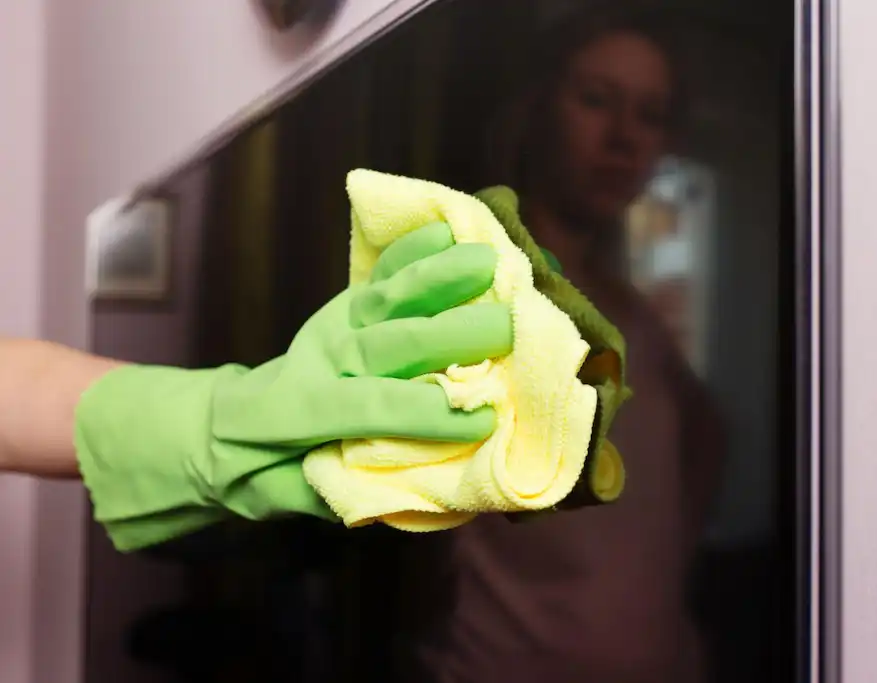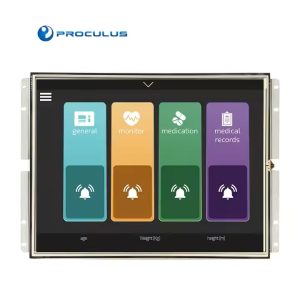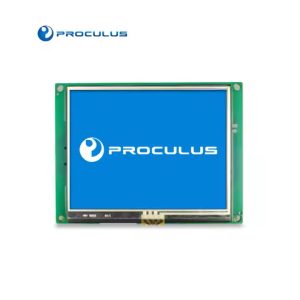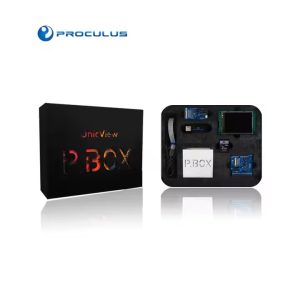How to Clean an LCD Screen Properly Without Damaging It
Knowing how to clean an LCD screen properly is essential for protecting your display from scratches, smudges, and long-term damage.
Whether you’re maintaining a control panel in an industrial setting or a touchscreen interface on a medical device, proper cleaning not only improves visibility but also helps extend the life of your equipment.
In this guide, you’ll learn safe, step-by-step methods using simple tools and proven techniques to keep your LCD screen clear, functional, and damage-free.
How to clean an LCD screen? Step by Step
Cleaning an LCD screen the right way helps protect your display from scratches, smudges, and internal damage. This step-by-step guide shows you how to safely clean your screen using simple tools and careful techniques.
Power off the screen and unplug the device
Before cleaning, always turn off your device and disconnect it from any power source.
This not only prevents electrical risks but also makes smudges and dust easier to see on a dark screen.
For embedded or industrial systems, ensure all connected equipment is powered down to avoid accidental input or signal interference during cleaning.
Use a soft, dry microfiber cloth
A high-quality microfiber cloth is your best tool for cleaning LCDs. These cloths are designed to lift dust and oils without scratching or leaving lint.
Avoid using tissues, paper towels, or abrasive fabrics, which can damage the screen surface or remove protective coatings.
Keep a dedicated microfiber cloth just for your displays to avoid transferring debris from other surfaces.
Wipe the screen gently
Use slow, consistent motions (either circular or straight lines) to remove fingerprints and dust. Apply light pressure only. The goal is to lift dirt from the surface, not to press it in. If any spots remain, do not rub harder.
Instead, lightly dampen the cloth with an approved cleaning solution (see guidelines below) and repeat the motion. Rushing or scrubbing too hard can result in pixel distortion or pressure marks.
Never spray liquids directly on the screen
Spraying liquids straight onto the screen can cause moisture to seep into the edges or behind the glass, leading to short circuits or internal damage.
Instead, spray a small amount of cleaning solution onto your microfiber cloth. The cloth should be slightly damp, never wet.
This method keeps the display surface safe and avoids damaging sensitive internal components.
Never press down on an LCD display
LCD screens are made of multiple thin layers, and pressing too hard can cause irreparable harm, such as stuck pixels, pressure spots, or even cracks.
Always clean with minimal pressure. If you encounter stubborn smudges or grime, let the cleaning solution do the work. Never force it by pushing.
Vacuum dust from LCD edges
Dust and debris often collect around the bezel or frame of the LCD, especially in industrial or outdoor environments.
Over time, this buildup can interfere with touch sensitivity or airflow. Use a handheld vacuum with a soft brush attachment to gently remove dust from the edges and corners.
Make sure the vacuum has low suction to avoid damaging connectors or dislodging components in embedded systems.
What should I use to clean my LCD screen?

To safely clean an LCD screen, you should use materials that are non-abrasive, lint-free, and chemically safe for electronics.
The most recommended tool is a dry microfiber cloth, which can remove fingerprints, dust, and light smudges without scratching the surface. If a dry cloth isn’t enough, you can use:
- Distilled water (avoid tap water, as it contains minerals that may leave streaks or residue);
- A 50/50 mixture of distilled water and white vinegar, which is gentle and effective for oily smudges (Some manufacturers recommend a more conservative ratio like 5:1 or even 10:1 water to vinegar. Please read the instruction manual for this);
- Commercial LCD screen cleaners labeled specifically as “safe for electronics”.
Always apply the liquid to the cloth, not directly onto the screen. And avoid using rough materials like paper towels, tissue, or standard cloths. They can scratch the display or leave lint behind.
Also, be cautious with household cleaners, which may contain chemicals like ammonia or acetone that can damage anti-reflective coatings.
Can I use alcohol wipes on an LCD screen?
The short answer: Only with caution. Most alcohol wipes (especially those with high concentrations of isopropyl alcohol) are not safe for regular use on LCD screens.
Over time, alcohol can degrade the protective coatings on the display, causing clouding, discoloration, or streaking.
However, if you need to disinfect a screen (for example, in a medical or public-use environment), you can use:
- 70% isopropyl alcohol or lower, but only if the manufacturer confirms it’s safe for the panel type. Some manufacturers recommed a lower concentration like 50%. Check the instruction manual before you start disinfecting the screen.
- Specialized LCD-safe alcohol cleaning wipes that are designed not to damage sensitive coatings.
Apply gently and sparingly, and avoid frequent use. For routine cleaning, it’s better to stick with microfiber cloths and distilled water-based solutions.
Can I clean an LCD screen with water?
Yes, you can clean an LCD screen with water, but only if you use distilled water and follow proper technique.
Tap water contains minerals and impurities that can leave white spots or streaks on the display surface.
Distilled water, on the other hand, is free from these contaminants and is safe when used correctly. Here’s how to do it:
- Lightly dampen a microfiber cloth with distilled water, never soak it;
- Gently wipe the screen using minimal pressure;
- Follow up with a dry section of the cloth to remove any moisture.
Remember: Never spray water directly onto the screen. Moisture can seep into the edges or inside the display, potentially damaging internal components.
For a more effective clean, consider mixing distilled water with a small amount of white vinegar or using a commercial screen-safe solution.
Enhance Your Interface with Proculus Tech LCD Solutions
Cleaning your screen is just one part of maintaining a high-performing display, choosing the right technology from the start is just as important.
Proculus Tech offers a powerful range of UART TFT LCD modules designed for professionals in industrial, medical, automotive, and embedded systems.
Our displays simplify development with:
- Easy UART communication: only five serial commands needed.
- UnicView Studio: a drag-and-drop GUI editor that saves time.
- Wide screen sizes: from compact 2.8″ to full 18.5” HD panels.
- Resistive and capacitive touch options: built for durability.
- Industrial-grade reliability: operating from –20 °C to +70 °C.
Whether you’re building a smart control panel, diagnostic equipment, or a user-friendly interface for any device, Proculus displays are engineered to deliver clarity, speed, and reliability right out of the box.
Explore the full range of UART TFT LCD Modules from Proculus Technologies!
Conclusion
Proper care of your LCD screen it’s about preserving functionality, clarity, and long-term performance.
Whether you’re managing high-use industrial equipment, embedded systems, or personal electronics, safe cleaning practices help reduce wear, prevent damage, and maintain user satisfaction.
Always use the right tools and techniques: Power down the device, avoid abrasive materials, never apply liquids directly, and handle the screen gently.
These simple habits can significantly extend the life of your display and keep it performing at its best.
If you’re looking for robust, reliable LCD solutions designed for professional environments, Proculus Tech offers a full range of UART TFT LCD modules tailored for industrial, medical, and embedded applications.
With simple integration, powerful GUI tools, and unmatched durability, Proculus displays are built to last, clean and clear.
Explore our full lineup of display modules and discover how your interface can do more.

 English
English


